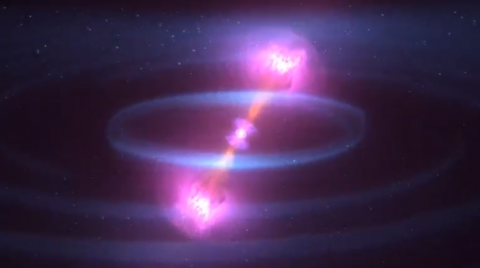
WASHINGTON, United States (Reuters) — Scientists in the United States and Europe have for the first time detected gravitational waves, the ripples in space and time predicted by Albert Einstein, at the same time as light from the same cosmic event, according to research published on Monday (October 16).
“This is the first time the cosmos has provided for us what I would call a ‘talking move’. We’ve moved from the era of ‘silent movies’ to ‘talking movies’,” said physicist David Reitze, Executive Director of the Laser Interferometer Gravitational-Wave Observatory, or LIGO, during a news conference in Washingotn D.C. to announce the discovery.
“In this case, the ‘audio soundtrack’ comes from the chirp of the neutron stars as they are inspiraling – as they are orbiting together and colliding – and the ‘video’ is basically the light that we see after the collision,” Reitze said.
The waves, caused by the collision of two neutron stars some 130 million years ago, were first detected in August by LIGO, in Washington state and Louisiana as well as at a third detector, named Virgo, in Italy.
Previously, scientists could only study space by observing electromagnetic waves such as radio waves, visible light, infrared light, X-rays and gamma rays. Those waves encounter interference as they travel across the universe, but gravitational waves do not, meaning they offer a wealth of additional information.
The gravitational waves had been predicted by Einstein in 1916, as an outgrowth of his groundbreaking general theory of relativity.
“It’s amazing to think that in one day, in a few hours and the weeks that followed, all these predictions were confirmed at the same. So we solved a lot of mysteries,” said Northwestern University astrophysicist Vicky Kalogera during the news conference.
The observations found that gold, platinum and other heavy metals were blown into space by the aftermath of the merger of the stars, confirming that such cataclysmic events are likely the source of these metals.
“The gold in this watch was very likely produced in the collision of two neutron stars approximately billions of years ago,” Reitze said while taking out of his coat pocket his grandfather’s century-old watch.
Less than two years have passed since scientists working at the Massachusetts Institute of Technology and the California Institute of Technology first detected gravitational waves coming off two black holes.
Three U.S. scientists who made that discovery were awarded the Nobel prize in physics earlier this month.







